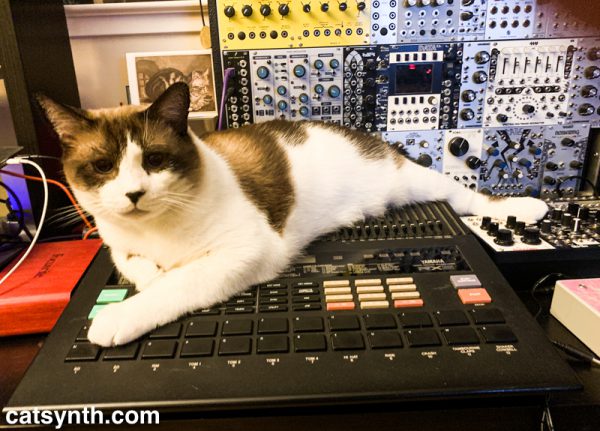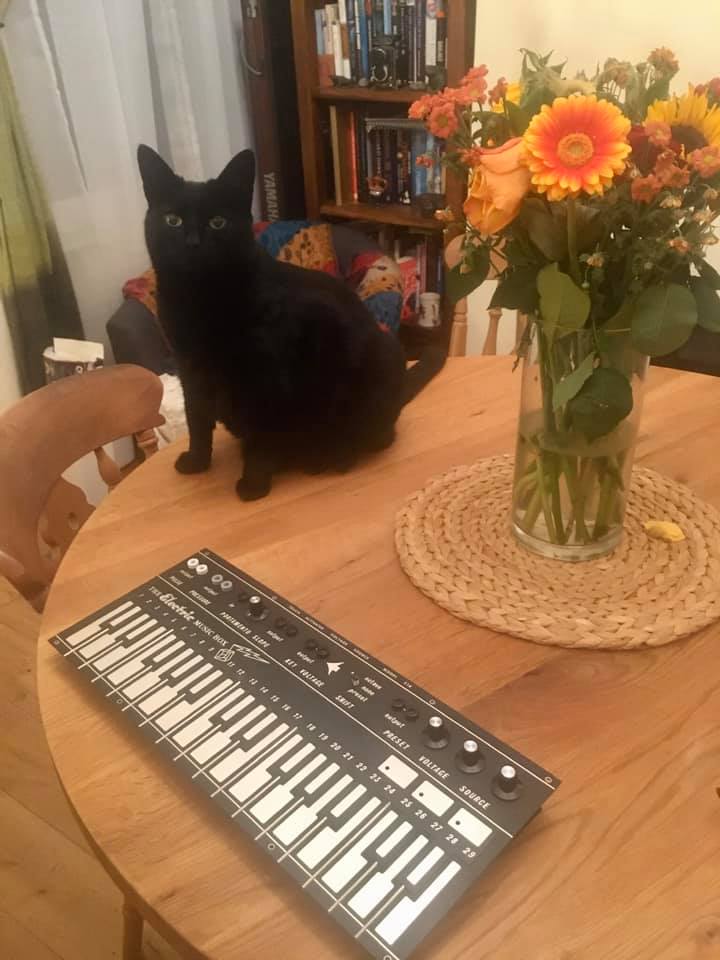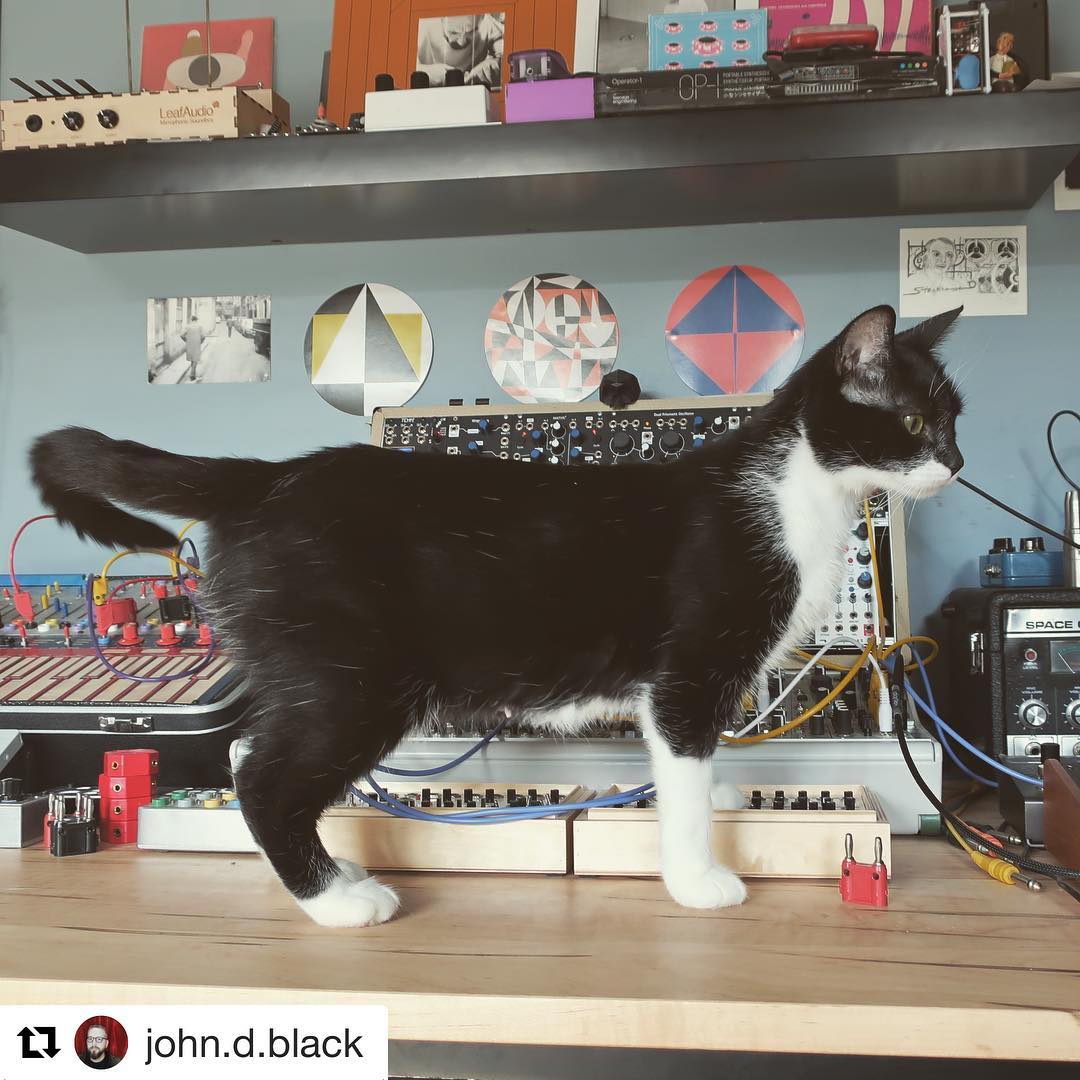This past weekend, April 22 and 23, a series of concerts and panels took place at the Gray Area Foundation for the Arts in San Francisco. It was in the midst of a busy and event-packed weekend (including the March for Science which we have already written about), but as Don Buchla was someone that I not only admired but knew personally, it was important to be there.
Buchla lives on though his many innovative musical instruments, and a pop-up museum was set up in side room of the theater showcasing many of them.

On the right of this photo is an example of Buchla’s iconic 200 series modular synthesizer, probably the instrument for which he is best known. On the left is the rarer 100 series, originally commissioned by electronic-music pioneers Ramon Sender and Morton Subotnick of the San Francisco Tape Music Center. Neither the of these early modular series had a traditional piano-style keyboard, nor were they based traditional subtractive-synthesis architecture of oscillators, filters, and amplifiers in that order, but rather a mix of traditional synth modules with unique waveshapers, low-pass gates. The latter is probably the most recognizable as the “Bucha sound” but the variety of musical sound expression from this instruments continues to be very wide and the ethos of his work can be seen in the current renaissance of sometimes esoteric modular synthesizers. You can read more about his work and philosophy on this tribute website.
There were also some instruments I had not seen before, including the Buchla Touché and the 700 series / MIDAS.

These were more conventional in the sense of having a keyboard and a more fixed topology, but were still quite versatile in terms of their software. They certainly have a very vintage 1980s look, especially with the computer monitors and graphics.
The evening concert began with tape pieces by George Lewis and a premier of a new piece by Laurie Spiegel.

Spiegel’s piece had a dark but sparse quality, with discretely positioned sounds and timbres.
The live performances began with Laetitia Sonami performing on a custom gestural controller.
Her work is often focused on live movement and gesture and indeed has been an influence on my own performance practice with the theremin. But Sonami is adept at very subtle motion with seemly precise affects on the sound output.
The live performances continued with Bob Ostertag, who controlled live music and video from the center of the hall.

Ostertag’s sound is quite distinctive independent of the particular instruments in use, usually noisy and hard driving. And this performance was no exception – indeed, I was able to instantly recognize the sound as his when it started, even without being able to see him at first in the darkened space. The music however, did have dynamic range and timbral variation that gave it a narrative contour. The video was abstract, but again with a bit of an urgent quality that kept things moving forward.
Morton Subotnik’s music is in many way the opposite of Bob Ostertag’s. It is quiet and very subtle, focused on small points and details in time.

It was spare, almost severe, but listening closely one can appreciate many of the timbral details. The changes are musical but on a different scale than one is accustomed to. The frequencies timbres are complex even while the amplitudes are low, and it is listening to these and the slight percussive elements that punctuate the music that one begins to hear how it fits together.
In between the live performances there was a tribute video for Don Buchla, featuring images as well as interviews with him. There were also cameos by a great many people I know in the electronic-music world. It was very touching, but also quite humorous, all in keeping with Don’s character.

The concert continued until late at night – in some ways, it was set up more likely a crowded nightclub or impromptu electronic-music party than a traditional concert. It was great to see it so well attended – the room was packed with people standing or sitting on the floor, but it did make focused listening a bit of a challenge at times. I was unfortunately not able to stay for the whole night, so missed a few live sets, including from friends Marielle V. Jakobsons, Tom Dimuzio, Matt Ingalls, and Richard Devine. I do hope to see them live again soon.
I also hope this is not the last event we have to celebrate the life and work of Don Buchla. I personally still feel like I have only scratched the surface of his instruments as a performer and listener.



















